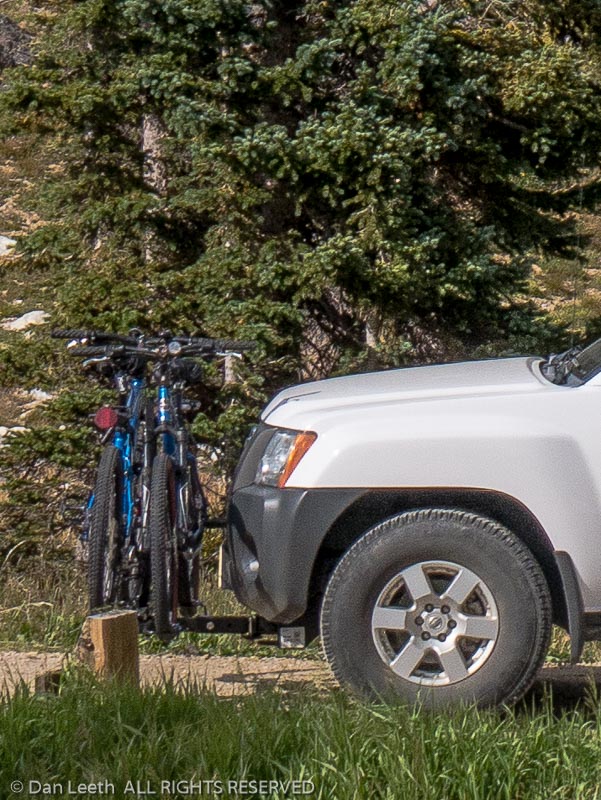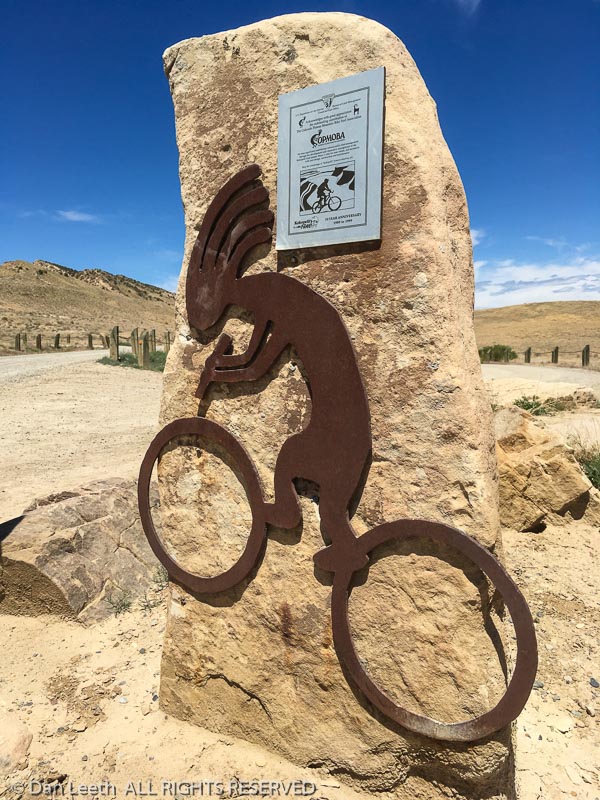Over the years, we’ve spent a lot of time and money trying to figure out how to tote our bicycles on trailer trips. With our previous trailer, we ultimately decided the best way to carry the bikes was on the front of our tow vehicle. We mounted a Curt front receiver for our Xterra and slid on our Swagman bike rack. Worked fine.

Then we upgraded both the trailer and the tow vehicle. Neither Curt nor anybody else made front receivers for our new Nissan Titan.

At the dealer’s suggestion, we ordered our trailer with the optional Lippert Jack-It bike rack, which fits around the electric jack on the front frame. Unfortunately, to be able to open the truck tailgate with the trailer attached required mounting the jack sideways. That meant removing the Jack-It.
We considered and rejected a few other options such as carrying the bikes in the trailer or in/on the truck. The best option seemed to be a variation of what other folks have done and simply mounting a receiver on the trailer’s back bumper and sliding in the bike rack. Not only would this get our bikes to camp, but by then moving the rack to the back of the truck, I could take the bikes to nearby trailheads.

The bike rack conversion turned out to be a three-beer project. To beef up the bumper to carry the load, we installed a pair of Mount-N-Lock Safety Struts (around $85). These supposedly increase the weight capacity of the bumper to 400 pounds according to the folks at eTrailer. To our reinforced bumper we bolted on an Eaz Lift RV Bumper Hitch (around $48 from Amazon). The hitch, rack and bikes weighed 100.8 pounds.

Mounting the bikes close to the bumper required moving the spare tire to another location, removing 43.2 pounds from the bumper. To do that, we bought a BAL Retract-A-Spare (about $100 from Amazon), which allows the spare to be carried under the trailer. It works just like the spare tire carriers found on most trucks and SUVs. A cable fits through the spare and is raised and lowered with a turn of a removable crank.

For ground clearance purposes, I wanted to put the spare as close to the axles as possible. While I would have preferred a back-of-the-axles location, the sewer drain plumbing on one side and the grill’s propane orifice on the other necessitated a front-of-the-axles mount. Three beers later, the job was ready for testing.

We hooked up the trailer, mounted our bikes to the back and did a 250-mile drive down the pothole-infested piece of pavement known as Colorado’s Interstate 70. Eying the bikes through the observation (backup) camera, they traveled solidly with no sway, and the spare tire came through still tightly mounted to the undercarriage of the trailer.

All that called for yet another brew or two.
